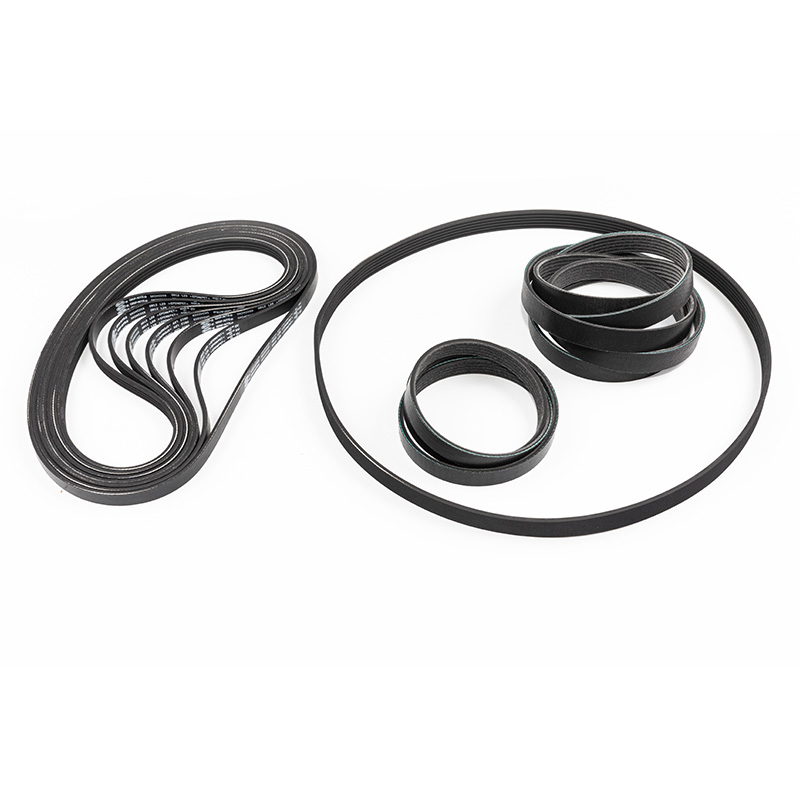The tensioner pulley plays a crucial role in the performance of Automotive V-Ribbed Belt systems. Here are the key functions and contributions of the tensioner pulley:
Maintaining Tension: The tensioner pulley functions as a dynamic regulatory mechanism within the intricate web of the V-Ribbed Belt system. Its primary responsibility lies in the perpetual adjustment of tension levels within the belt. This dynamic tension management is a critical safeguard against potential pitfalls such as slackness or excessive tightness. By meticulously monitoring and adjusting tension, the tensioner pulley ensures a finely tuned equilibrium, preventing issues that could compromise the seamless power transmission required in automotive engines.
Optimizing Contact: At the heart of the tensioner pulley's role is the orchestration of optimal contact dynamics between the V-Ribbed Belt and the interconnected pulley network. This optimization is akin to fine-tuning the symphony of mechanical components, ensuring that every revolution of the belt translates into an efficient transfer of power across the entire engine system. The tensioner pulley's contribution in this domain is not just about tension but about precision engineering that maximizes the efficacy of power transmission, adhering to the stringent standards expected in the automotive industry.
Reducing Vibrations and Noise: In the pursuit of automotive excellence, the tensioner pulley emerges as a silent maestro, orchestrating the reduction of vibrations and noise within the engine system. Its calibrated adjustments and smooth operations contribute to a harmonious and quiet engine performance. This nuanced control over the mechanical symphony is not merely a secondary benefit but a testament to the meticulous design and engineering aimed at elevating the driving experience to the highest standards of comfort and sophistication.
Preventing Belt Slippage: The tensioner pulley stands sentinel against one of the potential disruptors of optimal engine performance – belt slippage. Its vigilance in maintaining the ideal tension acts as a formidable defense mechanism, thwarting any tendencies of the V-Ribbed Belt to slip on the pulleys. This proactive stance ensures that power loss is minimized, and the engine operates at peak efficiency, aligning with the uncompromising demands of automotive engineering.
Extending Belt Lifespan: Beyond its immediate role in tension management, the tensioner pulley emerges as a guardian of longevity for the V-Ribbed Belt. By meticulously regulating tension, it becomes a steward of the belt's durability, minimizing wear and tear. This extends the operational lifespan of the V-Ribbed Belt, a testament to the tensioner pulley's commitment to longevity and its role in mitigating the economic and logistical implications of frequent belt replacements.
Compensating for Belt Stretch: As V-Ribbed Belts naturally undergo stretching over time, the tensioner pulley steps into the role of a sophisticated compensator. Its automatic adjustment mechanism elegantly accommodates these incremental stretches, ensuring that the tension in the belt remains within the optimal range. This adaptability reflects not just technical prowess but a strategic foresight in engineering that anticipates and addresses the evolving nature of belt dynamics over the course of its lifecycle.
Adapting to Operating Conditions: The tensioner pulley's resilience is showcased in its capacity to seamlessly adapt to the myriad operating conditions that an automotive engine encounters. Whether facing extremes in temperature or fluctuating engine loads, the tensioner pulley maintains its efficacy. This adaptability is not a passive trait but an active response to the dynamic nature of automotive operations, underscoring its significance in upholding the reliability and consistency expected in high-performance engines.
Simplifying Maintenance: Within the realm of user experience, the tensioner pulley emerges as a beacon of user-friendliness by streamlining maintenance procedures. Its autonomous tension adjustments reduce the necessity for frequent manual interventions, enhancing the overall ease of maintenance for vehicle owners. This simplicity in upkeep is not just a convenience factor but a deliberate design choice that aligns with the overarching goal of delivering a reliable and hassle-free automotive experience.
Automotive V-Ribbed Belts


 View More >>
View More >>
 View More >>
View More >>
 View More >>
View More >>
 View More >>
View More >>
 View More >>
View More >>
 View More >>
View More >>
 View More >>
View More >>
 View More >>
View More >>
 View More >>
View More >>
 View More >>
View More >>
 View More >>
View More >>
 View More >>
View More >>